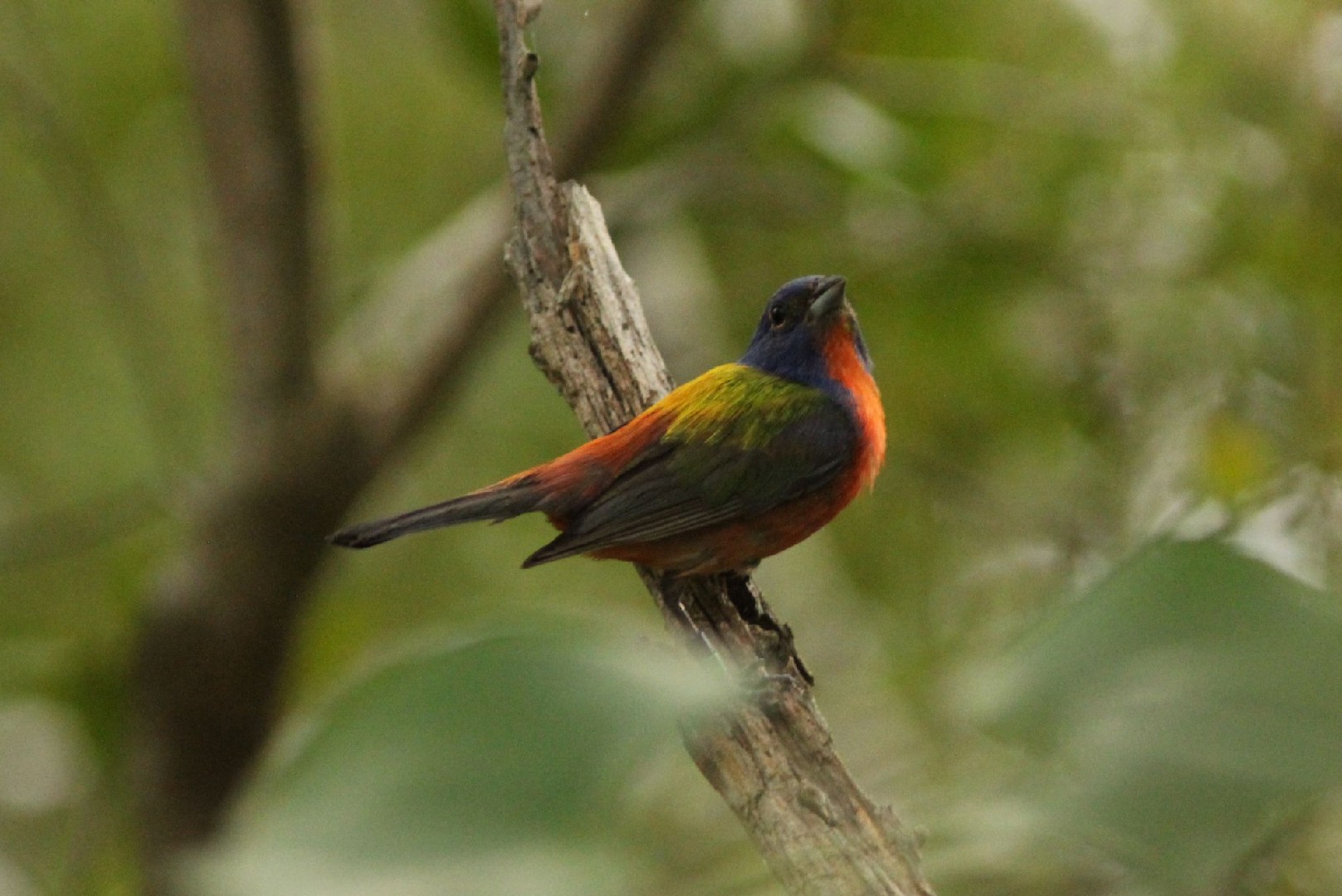Painted Bunting
A species of North american buntings Scientific name : Passerina ciris Genus : North american buntings
Painted Bunting, A species of North american buntings
Botanical name: Passerina ciris
Genus: North american buntings
Content
Description People often ask General Info
 Photo By Caleb Putnam , used under CC-BY-SA-2.0 /Cropped and compressed from original
Photo By Caleb Putnam , used under CC-BY-SA-2.0 /Cropped and compressed from original Description
With their beautiful, almost surreal rainbow coloring, painted Buntings are a sight to behold when they stop by home bird feeders. Their natural beauty, however, was the reason thousands of them were caught in the U.S. and shipped to Europe where they were sold as caged songbirds in the mid-1800s. Although trapping and selling these birds is now illegal, it still happens in large numbers in Mexico, Central America, and the Caribbean.
Size
12 - 14 cm
Life Expectancy
11 years
Nest Placement
Shrub
Clutch Size
3 - 4 eggs
Incubation Period
1 - 3 broods
Number of Broods
11 - 12 days
Nestling Period
9 days
Feeding Habits
Painted Bunting's diet comprises mainly seeds, such as bristle grass, pigweed, wood sorrel, and more, obtained by ground foraging or dragging down stems. During breeding, it pivots to insects like grasshoppers and spiders, reportedly raiding webs, and expands foraging to marshes and trees.
Habitat
Painted Bunting thrives in semi-open habitats with abundant shrubbery, such as woodland edges and brushy roadsides. They adapt to areas from sea level to moderate altitudes, often found in overgrown farms and suburban thickets. In winter, painted Bunting migrates to tropical grassy or shrubby areas, preferring edge habitats near forests and vegetated savannas.
Nest Behavior
During the nesting phase, both painted Bunting partners search for sites, with the female building the nest in about 2 days. She shapes a cup 2 inches wide, lays eggs, and with the male, participates in parental care, protecting and feeding the young.
Nest Characteristics
Painted Bunting typically selects a nest site 3-6 feet above ground amidst dense foliage, occasionally as high as 50 feet. Nest plants vary from Spanish moss to pines. The female constructs the nest using materials such as weed stems, leaf skeletons, and grasses, bound with cobwebs and possibly lined with horsehair.
Dite type
Granivorous
People often ask
General Info
Feeding Habits
Bird food type
Bird Feeder Type

Platform
Behavior
Painted Bunting's are highly territorial during the breeding season, with males defending areas of around 3 acres. They engage in intense conflicts that may result in physical harm or even death. Daily activities involve foraging for seeds and insects and performing striking courtship displays, where males exhibit their vibrant plumage. Outside of breeding, painted Bunting's can be gregarious, forming small flocks and mingling with other granivorous birds in winter habitats. Their behavior reflects a stark dichotomy between the aggressive defense of breeding territories and more sociable off-season interactions.
Distribution Area
These include southern Arizona, southern New Mexico, southern and eastern Texas, Oklahoma, Arkansas, Louisiana, northern Florida, coastal Georgia, the southern coast and inland waterways such as the Santee River of South Carolina and northern Mexico. They winter in South Florida, Cuba, the Bahamas, along both coasts of Mexico and through much of Central America. Occasionally, they may be vagrants further north, including to New York, Pennsylvania, and New Jersey. The bird is also found every few years as far north as New Brunswick, Canada. 
Scientific Classification
Phylum
Chordates Class
Birds Order
Perching birds Family
Cardinals Genus
North american buntings Species
Painted Bunting